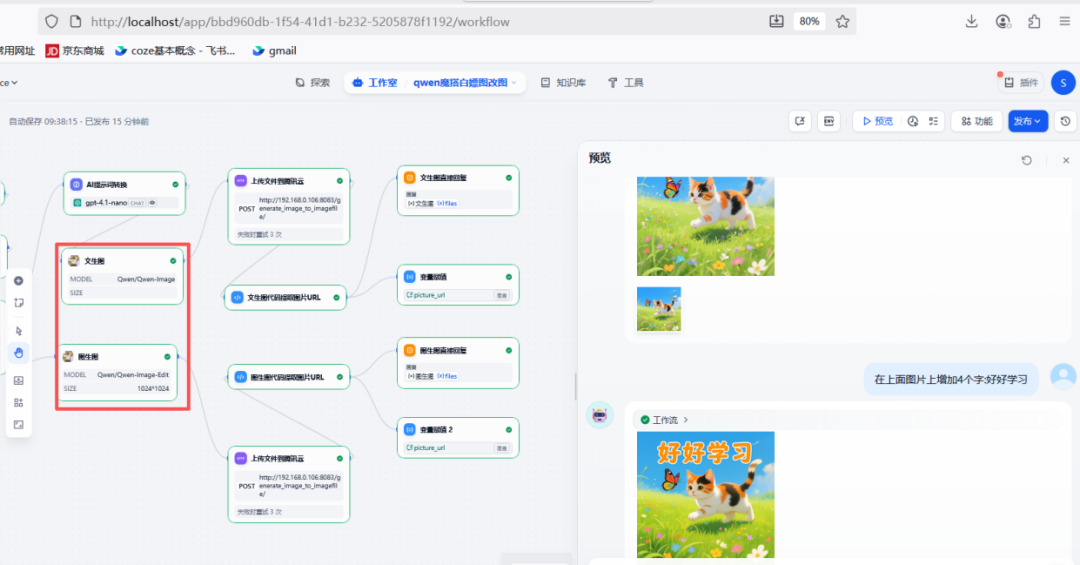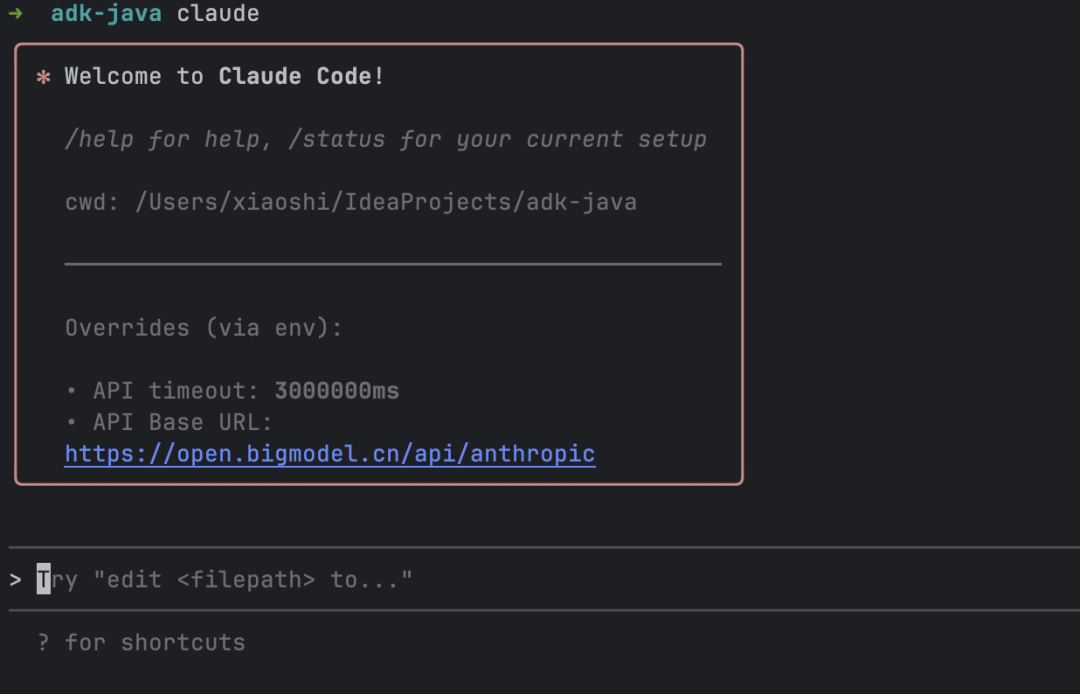This article will detail how to use the Docker cap (a poem) Docker Compose to deploy, update, and migrate open source LLM application development platforms Dify (v0.6.14). The content covers advanced operations from rapid deployment to data backup to building images from source code, aiming to provide a clear and practical operation guide for developers and O&M personnel.
Rapid Deployment of Dify with Docker Compose
For most users, using the officially provided Docker Compose Documentation is deployed Dify The quickest and most recommended way.
Step 1: Obtain the Dify Deployment File
First, from Dify Get the official repository of the docker Deployment Catalog.
Step 2: Configure Environment Variables
Dify of all configurations are managed through environment variables. Before deployment, the configuration template file .env.example replicate .env document and then modify it to suit your actual needs.
# 进入 docker 部署目录
cd dify/docker
# 复制环境变量配置文件
cp .env.example .env
After that, you can use a text editor to open the .env file, change the database password according to the comments in it,SECRET_KEY and other key configurations.
Step 3: Start the service
After completing the configuration, execute the following command to start it in the background Dify of all services.
docker-compose up -d
This command automatically pulls the required Docker image and start all containers in order.
Updating Dify Services
(coll.) fail (a student) Dify When releasing a new version, you can follow the steps below to perform a security update.
- Stop and remove old containers:
cd dify/docker docker-compose down - Backup Data (Important):
It is highly recommended that you back up before performing any updates.dockerCatalog, especially the one in which thevolumesSubdirectories. This is the key to ensuring data security. - Get the new version of the document:
Download or pull the latest version ofDifysource code with the newdockerThe catalog replaces the old one. - Importing a new version of the image:
If you are in an offline environment, you need to import the new version of the image file in advance. - Updating configuration files:
Compare the old with the new.envfile to migrate the customized configuration to the new.envDocumentation. - Launching the new version of the service:
docker-compose up -d
Data Migration and Backup
Data migration is a common requirement in operations and maintenance.Dify Data persistence is performed using two approaches: local directory mapping and the Docker Name the data volumes, so they are migrated differently.
Migrate volume directories that are mapped locally
Dify (used form a nominal expression) docker-compose.yaml In the documentation, some services persist data through "local directory mapping". This means that a directory in the container corresponds directly to a directory in the host's ./volumes Catalog.

Migration this way is very straightforward and is essentially file copying.
- Stop Dify Services
All containers must be stopped before manipulating the file to prevent data write conflicts.docker-compose down - Packing Volume Catalog
commander-in-chief (military)volumesdirectory is packed into a zip file.tar -czvf dify-volumes.tar.gz ./volumes - Unzip on the new server
After transferring the zip to the target location on the new server, unzip it.tar -xzvf dify-volumes.tar.gz
Migrating Docker Named Data Volumes
with regards to PostgreSQL and other key services.Dify adopted Docker The data is persisted in a "named data volume". Such a volume consists of Docker Unified management, with its physical files stored in the /var/lib/docker/volumes/ directory, direct copying is relatively cumbersome and may have permissions issues.

in order to oradata cap (a poem) dify_es01_data These two data volumes are used as an example, and the following is the recommended migration method.
clarification:: If deployed with docker-compose -p dify Specify the name of the project.Docker A prefix is automatically added to the volume name, for example dify_oradataThe
Method 1: Backup and Restore with Temporary Containers (Recommended)
This method does not require root permissions, and there is no need to care about the specific physical path of the volume on the host, it is a safe and standardized practice.
- Backup Data Volumes
Create a temporaryalpinecontainer, mount both the data volume to be backed up and a local backup directory, and then execute the pack command inside the container.# 确保当前目录下有 backup 子目录 mkdir -p backup # 备份 oradata 数据卷 docker run --rm -v oradata:/source -v $(pwd)/backup:/backup alpine sh -c "cd /source && tar czf /backup/oradata.tar.gz ." # 备份 dify_es01_data 数据卷 docker run --rm -v dify_es01_data:/source -v $(pwd)/backup:/backup alpine sh -c "cd /source && tar czf /backup/es_data.tar.gz ." - Transferring Backup Files
commander-in-chief (military)backupdirectory of theoradata.tar.gzcap (a poem)es_data.tar.gzFile transfer to the new server. - Recovering data on a new server
First create a data volume with the same name on the new server and then restore the data into it in a similar way.# 在新服务器上创建空的命名数据卷 docker volume create oradata docker volume create dify_es01_data # 从备份文件恢复数据到 oradata 卷 docker run --rm -v oradata:/target -v /path/to/backup:/backup alpine sh -c "cd /target && tar xzf /backup/oradata.tar.gz" # 从备份文件恢复数据到 dify_es01_data 卷 docker run --rm -v dify_es01_data:/target -v /path/to/backup:/backup alpine sh -c "cd /target && tar xzf /backup/es_data.tar.gz"
Method 2: Directly manipulate the host volume directory (requires root privileges)
If the server that owns the root permissions, you can also back up the physical directory of the volume directly.
- Finding the physical path to a volume
docker volume inspect oradata dify_es01_dataThis command outputs the volume's
Mountpoint, i.e., the physical storage path. - Direct Packaging
# 获取路径并打包 ORADATA_PATH=$(docker volume inspect -f '{{.Mountpoint}}' oradata) ES_DATA_PATH=$(docker volume inspect -f '{{.Mountpoint}}' dify_es01_data) sudo tar -czf oradata_backup.tar.gz -C $ORADATA_PATH . sudo tar -czf es_data_backup.tar.gz -C $ES_DATA_PATH .
Advanced Operations: Building and Managing Images from Source
In scenarios where secondary development is required, security patches are applied, or offline deployments are made, manual builds from source are required Dify (used form a nominal expression) Docker Mirroring.
Building APIs and Web Mirrors
Dify The core services are divided into api cap (a poem) web Two parts that need to be built separately.
- Build the API image (
dify/dify-api)cd api && docker build . -t dify/dify-api:0.6.14 - Build a web image (
dify/dify-web)cd web && docker build . -t dify/dify-web:0.6.14
Exporting and Importing Images (for offline environments)
After building or pulling an image, you can export it as a .tar file to be imported for use on servers that do not have access to the external network.
- Exporting Mirrors
utilizationdocker savecommand to package one or more images.# 导出 Dify 核心镜像 docker save -o dify_dify_api_0.6.14.tar dify/dify-api:0.6.14 docker save -o dify_dify_web_0.6.14.tar dify/dify-web:0.6.14 # 导出其它依赖镜像 docker save -o postgres_15_alpine.tar postgres:15-alpine docker save -o redis_6_alpine.tar redis:6-alpine - Importing Images
On the new server, use thedocker loadcommand from.tarfile to load the image.docker load -i dify_dify_api_0.6.14.tar docker load -i dify_dify_web_0.6.14.tar docker load -i postgres_15_alpine.tar docker load -i redis_6_alpine.tar
Core Concept Analysis
Understanding the following key concepts will help to better maintain and utilize the DifyThe
docker together with docker-legacy catalogs
exist Dify Two deployment directories exist in the source code.docker-legacy is the old deployment method, and the docker The catalog is the current recommended and more structured deployment option. New users should always choose to use the docker Catalog.

SECRET_KEY role of
exist dify-api serviced .env configuration file.SECRET_KEY is a critical security configuration. It is a long random string that is used to encrypt and issue a user's session cookiethat prevents the session from being tampered with. Be sure to set this to a complex value that no one can guess.

Ignored at build time storage catalogs
Dify (used form a nominal expression) Dockerfile When the image is built, it is passed through the .dockerignore Documentation explicitly ignored storage Catalog. This is because storage directory is used to store tenant uploaded files, key pairs, and other sensitive or private information, which should not be packaged into a common Docker in the image and should instead be dynamically mounted at runtime via a data volume.

analyze docker run --rm Backup command
The recommended backup command template in the Data Migration section has the following meanings for each parameter:
docker run --rm -v <volume_to_backup>:/source -v <host_backup_dir>:/backup <image> sh -c "<commands>"
| assemblies | Meaning and use |
|---|---|
docker run |
Start a new container. |
--rm |
Containers are automatically deleted after execution, which is ideal for performing one-time tasks and avoiding leaving behind useless temporary containers. |
-v :/source |
Backup the Docker The data volume is mounted to the container within the /source Catalog. |
-v :/backup |
Mount the directory on the host machine that is used to store the backup files into the container's /backup Catalog. |
| “ | Specify a lightweight base image, such as the alpineIt has a built-in tar and other commonly used tools. |
sh -c "..." |
executed inside the container shell command. For example cd /source && tar czf /backup/backup.tar.gz . Indicates going into the source data directory and then packing all its contents into the backup directory. |






































